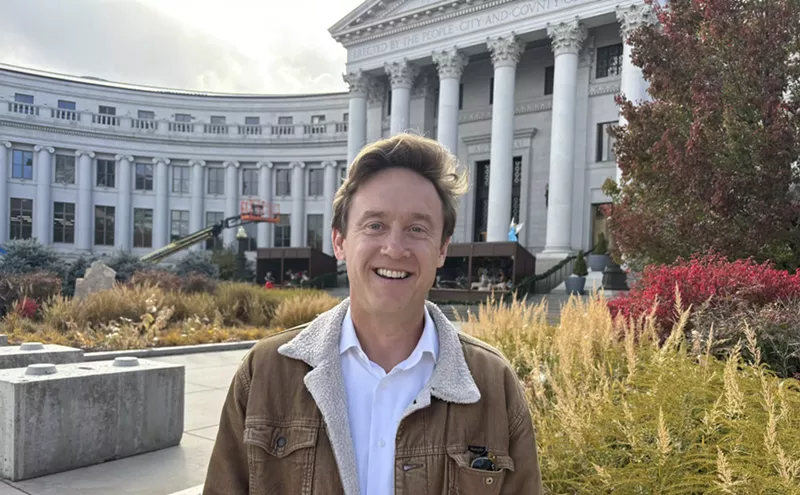Plutonium has a half-life of 24,100 years — and it looks like stories about the former Rocky Flats Nuclear Weapons plant, which produced plutonium triggers for bombs at a facility sixteen miles northwest of Denver, could keep coming for about as long. The legacy of the plant includes ongoing concerns about the damage done to both health and property values in the area.
Over the past six months, Metropolitan State University of Denver, in partnership with Rocky Flats Downwinders, conducted a health survey to determine if residents who lived downwind of Rocky Flats, which operated from the early '50s until it was raided by the FBI in June 1989 for alleged environmental crimes, had experienced any unusual illnesses. Rocky Flats Downwinders was founded in 2015 to address concerns of current and past residents of Arvada, Broomfield, Thornton and surrounding areas that living downwind of the plutonium-processing plant could have affected their health.
For the study, MSU researchers and students collected data from 1,700 residents who lived within the boundaries of Highway 128/120th Avenue on the north, I-25 on the east, I-70 on the south and Highway 93 on the west between 1952 and 1992, when the plant officially closed. Researchers will release their findings in two town-hall meetings today, at noon at Standley Lake Library, 8485 Kipling Street in Arvada, and at 6 p.m. at the Superior Town Hall, 124 East Coal Creek Drive in Superior.
“I see some concerning patterns in the data,” said Carol Jensen, a longtime nurse and the principal investigator for the survey, as well as professor of integrative health care at MSU, in a release about the study. “Thyroid cancer, for example, is the second most common disease in our research and has been linked to ionizing radiation in the past. In the rest of the state and nationwide, thyroid is the ninth most-common cancer.”
More than 40 percent of the reported cancers in the study are classified as “rare,” meaning that they generally affect less than fifteen of 100,000 people per year, she notes.
Jensen will be on hand at both meetings to discuss the study's findings. Kristen Iversen, author of Full Body Burden: Growing Up in the Nuclear Shadow of Rocky Flats, will provide historical context.
Today, meanwhile, the University of California Irvine is hosting "Rocky Flats: Causes of Action," a legal review of four cases involving the plant and its aftermath. One of those cases is the class-action lawsuit filed by property owners near Rocky Flats back in 1990, shortly after the FBI raid that ended plutonium production, alleging that the actions of the plant had damaged their property; after legal delay after delay, that case has been settled for $375 million, with disbursements set for next year. (See the "Causes of Action" agenda here.)
Much of the former Rocky Flats facility — subject of a ten-year-long, $7 billion cleanup — is slated to open as a wildlife refuge in the spring of 2018.
The half-life of plutonium is 24,100 years. The stories will go on just as long

Audio By Carbonatix
[
{
"name": "GPT - Billboard - Slot Inline - Content - Labeled - No Desktop",
"component": "23668565",
"insertPoint": "2",
"requiredCountToDisplay": "2"
},{
"name": "STN Player - Float - Mobile Only ",
"component": "23853568",
"insertPoint": "2",
"requiredCountToDisplay": "2"
},{
"name": "Editor Picks",
"component": "17242653",
"insertPoint": "4",
"requiredCountToDisplay": "1"
},{
"name": "Inline Links",
"component": "18838239",
"insertPoint": "8th",
"startingPoint": 8,
"requiredCountToDisplay": "7",
"maxInsertions": 25
},{
"name": "GPT - 2x Rectangles Desktop, Tower on Mobile - Labeled",
"component": "24956856",
"insertPoint": "8th",
"startingPoint": 8,
"requiredCountToDisplay": "7",
"maxInsertions": 25
},{
"name": "Inline Links",
"component": "18838239",
"insertPoint": "8th",
"startingPoint": 12,
"requiredCountToDisplay": "11",
"maxInsertions": 25
},{
"name": "GPT - Leaderboard to Tower - Slot Auto-select - Labeled",
"component": "17676724",
"insertPoint": "8th",
"startingPoint": 12,
"requiredCountToDisplay": "11",
"maxInsertions": 25
}
]










